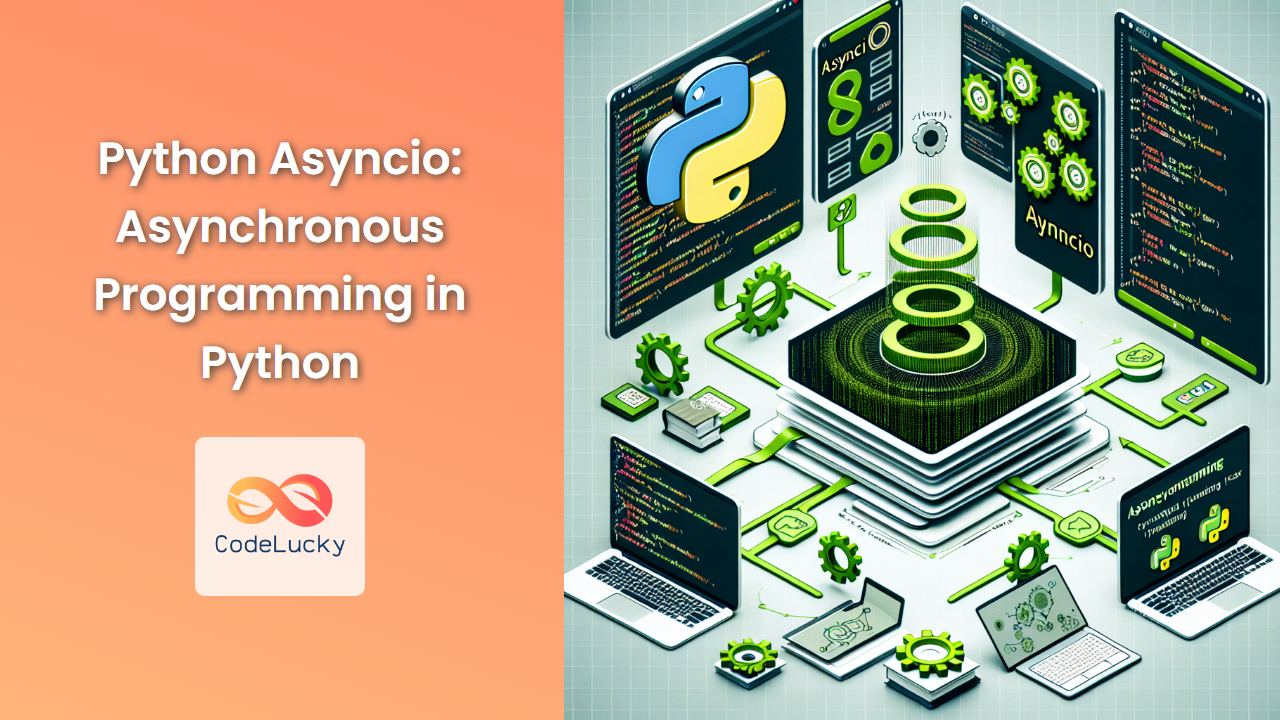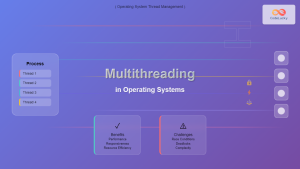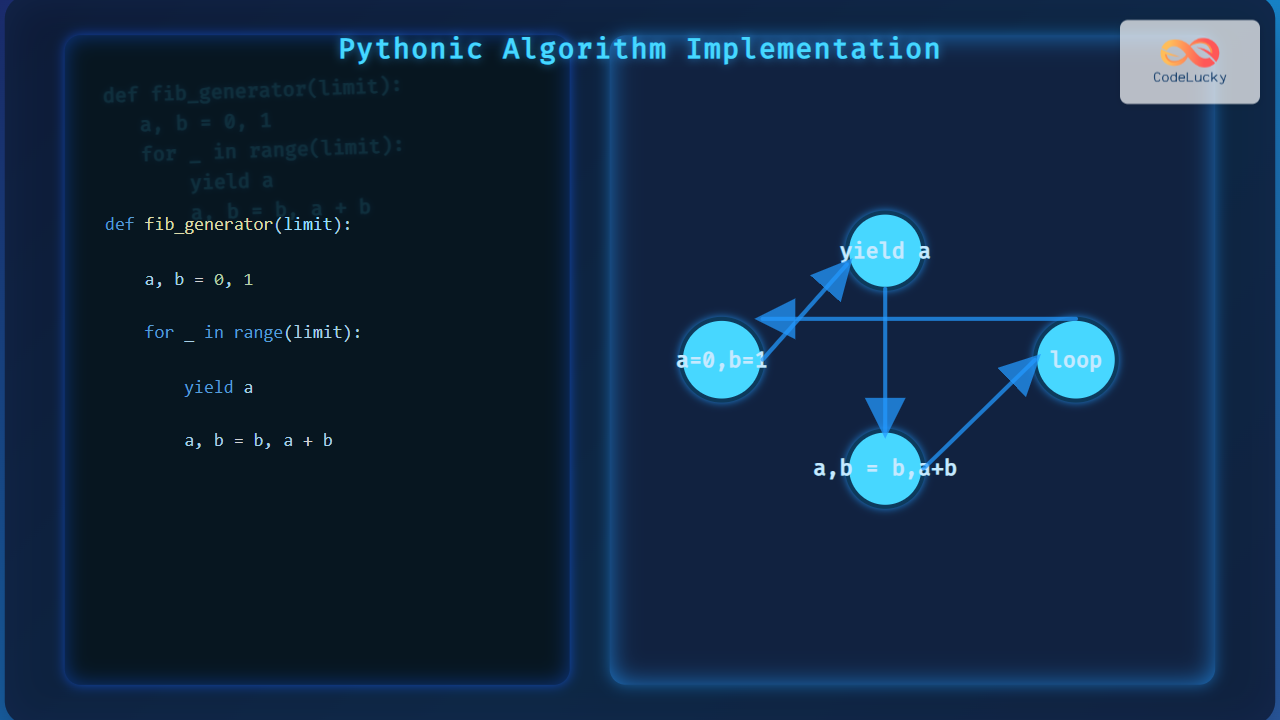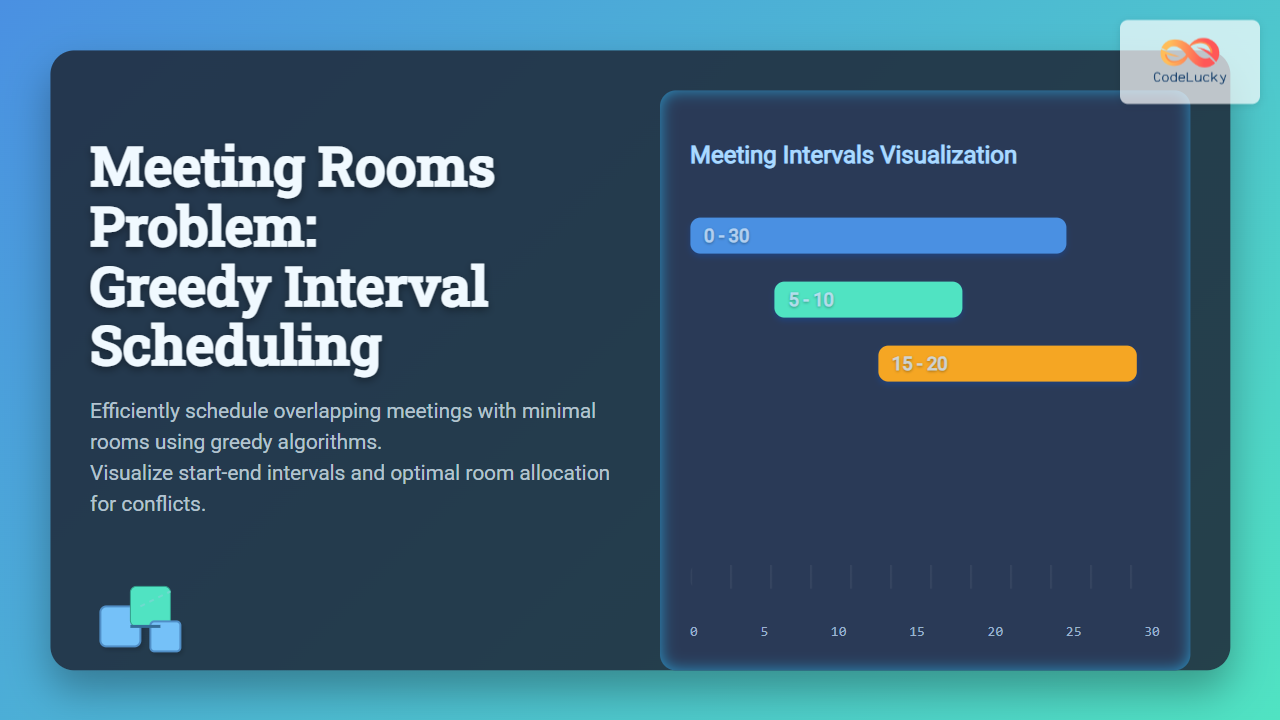Python's asyncio module is a game-changer in the world of concurrent programming. It provides a framework for writing single-threaded concurrent code using coroutines, multiplexing I/O access over sockets and other resources, running network clients and servers, and other related primitives. In this comprehensive guide, we'll dive deep into asyncio, exploring its core concepts, syntax, and real-world applications.
Understanding Asynchronous Programming
Before we delve into asyncio, let's understand what asynchronous programming is and why it's important.
🚀 Asynchronous programming is a programming paradigm that allows multiple operations to be executed concurrently without blocking the main execution thread.
In traditional synchronous programming, tasks are executed sequentially. This means that if a program needs to perform a time-consuming operation (like reading a large file or making a network request), it will block the execution of the entire program until that operation is complete.
Asynchronous programming, on the other hand, allows a program to continue executing other tasks while waiting for time-consuming operations to complete. This can lead to significant performance improvements, especially in I/O-bound applications.
Introduction to Python's Asyncio
Asyncio is Python's built-in module for writing concurrent code using the async/await syntax. It was introduced in Python 3.4 and has been continuously improved in subsequent versions.
🔑 Key components of asyncio:
- Event Loop: The core of asyncio. It manages and distributes the execution of different tasks.
- Coroutines: Special functions that can be paused and resumed.
- Tasks: Wrappers around coroutines to track their execution.
- Futures: Objects representing the eventual result of an asynchronous operation.
Let's start with a simple example to illustrate the basic syntax:
import asyncio
async def greet(name):
print(f"Hello, {name}!")
await asyncio.sleep(1)
print(f"Goodbye, {name}!")
async def main():
await asyncio.gather(
greet("Alice"),
greet("Bob"),
greet("Charlie")
)
asyncio.run(main())
In this example:
- We define an asynchronous function
greetusing theasync defsyntax. - Inside
greet, we useawait asyncio.sleep(1)to simulate a time-consuming operation. - The
mainfunction usesasyncio.gatherto run multiplegreetcoroutines concurrently. - Finally, we use
asyncio.run(main())to run the main coroutine.
When you run this script, you'll see that all three greetings start almost simultaneously, wait for one second, and then say goodbye almost simultaneously. This demonstrates the concurrent nature of asyncio.
Coroutines: The Building Blocks of Asyncio
Coroutines are the heart of asyncio. They are special functions that can be paused and resumed, allowing other coroutines to run in the meantime.
🔍 Key points about coroutines:
- Defined using
async def - Can use
awaitto pause execution and wait for another coroutine - Return an awaitable object when called
Let's look at a more complex example to understand coroutines better:
import asyncio
import random
async def fetch_data(url):
print(f"Fetching data from {url}")
await asyncio.sleep(random.uniform(0.5, 2)) # Simulating network delay
print(f"Finished fetching data from {url}")
return f"Data from {url}"
async def process_data(data):
print(f"Processing {data}")
await asyncio.sleep(0.5) # Simulating processing time
print(f"Finished processing {data}")
return f"Processed {data}"
async def main():
urls = ['http://example.com', 'http://example.org', 'http://example.net']
# Fetch all data concurrently
fetch_tasks = [fetch_data(url) for url in urls]
fetched_data = await asyncio.gather(*fetch_tasks)
# Process all data concurrently
process_tasks = [process_data(data) for data in fetched_data]
processed_data = await asyncio.gather(*process_tasks)
print("All data processed:", processed_data)
asyncio.run(main())
In this example:
- We define two coroutines:
fetch_dataandprocess_data. - In the
maincoroutine, we create tasks for fetching data from multiple URLs concurrently using a list comprehension andasyncio.gather. - Once all data is fetched, we create tasks for processing all the fetched data concurrently.
- Finally, we print the processed data.
This script demonstrates how asyncio can be used to perform multiple I/O-bound operations (fetching data) and CPU-bound operations (processing data) concurrently, potentially saving a significant amount of time compared to a synchronous approach.
The Event Loop
The event loop is the core of asyncio's operation. It's responsible for scheduling and running asyncio tasks.
🔄 Key points about the event loop:
- It's like a forever-running while loop that manages all the asynchronous operations.
- It decides which coroutine to run next based on which ones are ready to resume.
- In most cases, you don't need to interact with it directly;
asyncio.run()handles it for you.
However, sometimes you might need more control over the event loop. Here's an example:
import asyncio
async def task1():
print("Task 1 starting")
await asyncio.sleep(2)
print("Task 1 completed")
async def task2():
print("Task 2 starting")
await asyncio.sleep(1)
print("Task 2 completed")
async def main():
print("Main starting")
task1_obj = asyncio.create_task(task1())
task2_obj = asyncio.create_task(task2())
await asyncio.sleep(0.5)
print("Main doing other work")
await task1_obj
await task2_obj
print("Main completed")
# Get the event loop
loop = asyncio.get_event_loop()
# Run the main coroutine until it's complete
loop.run_until_complete(main())
# Close the loop
loop.close()
In this example:
- We define two tasks,
task1andtask2, with different sleep durations. - In the
maincoroutine, we create Task objects for these coroutines usingasyncio.create_task(). - We then do some "other work" in the main coroutine before waiting for the tasks to complete.
- Instead of using
asyncio.run(), we manually get the event loop, run the main coroutine, and then close the loop.
This level of control can be useful in more complex scenarios or when integrating asyncio with other frameworks.
Handling Exceptions in Asyncio
Exception handling in asyncio is similar to synchronous Python, but there are some important differences to be aware of.
⚠️ Key points about exception handling in asyncio:
- Exceptions in coroutines are propagated to the caller.
- Unhandled exceptions in Tasks are stored in the Task object and do not immediately raise an exception.
asyncio.gather()can be used withreturn_exceptions=Trueto handle exceptions from multiple tasks.
Let's look at an example:
import asyncio
async def risky_operation(id):
if id % 2 == 0:
raise ValueError(f"Even ID not allowed: {id}")
await asyncio.sleep(1)
return f"Operation {id} successful"
async def main():
tasks = [asyncio.create_task(risky_operation(i)) for i in range(5)]
results = await asyncio.gather(*tasks, return_exceptions=True)
for i, result in enumerate(results):
if isinstance(result, Exception):
print(f"Task {i} failed with exception: {result}")
else:
print(f"Task {i} succeeded with result: {result}")
asyncio.run(main())
In this example:
- We define a
risky_operationthat raises an exception for even IDs. - In the
maincoroutine, we create tasks for multiplerisky_operationcalls. - We use
asyncio.gather()withreturn_exceptions=Trueto collect all results, including exceptions. - We then iterate over the results, checking if each result is an exception or a successful result.
This approach allows us to handle exceptions from multiple concurrent operations in a clean and efficient manner.
Asyncio for Network Programming
One of the most common use cases for asyncio is in network programming. Asyncio provides high-level APIs for creating network clients and servers.
🌐 Key asyncio networking modules:
asyncio.open_connection()andasyncio.start_server()for TCP connectionsasyncio.open_unix_connection()andasyncio.start_unix_server()for Unix domain sockets- The
asyncio.Protocolclass for implementing network protocols
Let's create a simple echo server and client using asyncio:
import asyncio
# Echo server
async def handle_echo(reader, writer):
data = await reader.read(100)
message = data.decode()
addr = writer.get_extra_info('peername')
print(f"Received {message!r} from {addr!r}")
print(f"Send: {message!r}")
writer.write(data)
await writer.drain()
print("Close the connection")
writer.close()
await writer.wait_closed()
async def main_server():
server = await asyncio.start_server(
handle_echo, '127.0.0.1', 8888)
addr = server.sockets[0].getsockname()
print(f'Serving on {addr}')
async with server:
await server.serve_forever()
# Echo client
async def tcp_echo_client(message):
reader, writer = await asyncio.open_connection(
'127.0.0.1', 8888)
print(f'Send: {message!r}')
writer.write(message.encode())
await writer.drain()
data = await reader.read(100)
print(f'Received: {data.decode()!r}')
print('Close the connection')
writer.close()
await writer.wait_closed()
# Run server and client
async def main():
server_task = asyncio.create_task(main_server())
await asyncio.sleep(1) # Give the server time to start
client_tasks = [
asyncio.create_task(tcp_echo_client("Hello World")),
asyncio.create_task(tcp_echo_client("Asyncio is awesome")),
asyncio.create_task(tcp_echo_client("Python rocks"))
]
await asyncio.gather(*client_tasks)
server_task.cancel() # Stop the server
asyncio.run(main())
This example demonstrates:
- An echo server that listens for connections and echoes back any data it receives.
- An echo client that sends a message to the server and prints the response.
- A main function that starts the server and multiple client connections concurrently.
This showcases how asyncio can handle multiple network connections efficiently in a single thread.
Best Practices and Common Pitfalls
As you work with asyncio, keep these best practices and common pitfalls in mind:
✅ Best Practices:
- Use
asyncio.run()as the main entry point for asyncio programs. - Avoid mixing asyncio with threading or multiprocessing unless absolutely necessary.
- Use
asyncio.create_task()to run coroutines concurrently. - Utilize
asyncio.gather()for running multiple coroutines and collecting their results. - Always
awaitcoroutines and never call them directly.
❌ Common Pitfalls:
- Forgetting to
awaita coroutine, which results in the coroutine never being executed. - Blocking the event loop with synchronous operations. Use
asyncio.to_thread()for CPU-bound tasks. - Not properly handling exceptions in coroutines.
- Creating too many tasks, which can overwhelm system resources.
- Misusing
asyncio.sleep(0)as a way to yield control. Useawait asyncio.sleep(0)instead.
Here's an example demonstrating some of these practices:
import asyncio
import time
async def slow_operation(n):
await asyncio.sleep(1) # Simulate I/O operation
return n ** 2
async def main():
start_time = time.time()
# Good practice: Use asyncio.gather for concurrent execution
results = await asyncio.gather(
slow_operation(1),
slow_operation(2),
slow_operation(3),
slow_operation(4)
)
end_time = time.time()
print(f"Results: {results}")
print(f"Time taken: {end_time - start_time:.2f} seconds")
# Pitfall: Forgetting to await
task = asyncio.create_task(slow_operation(5))
# Correct way:
result = await task
print(f"Additional result: {result}")
# Pitfall: Blocking the event loop
# time.sleep(1) # This would block the entire event loop
# Correct way:
await asyncio.sleep(1)
asyncio.run(main())
This example demonstrates:
- Using
asyncio.gather()to run multiple coroutines concurrently. - The correct way to await a task created with
asyncio.create_task(). - The importance of using
asyncio.sleep()instead oftime.sleep()to avoid blocking the event loop.
Conclusion
Asyncio is a powerful tool in Python's concurrency toolkit. It allows you to write efficient, non-blocking code that can handle many concurrent operations, especially in I/O-bound scenarios. While it has a learning curve, mastering asyncio can significantly improve the performance and scalability of your Python applications.
Remember, asyncio is not a silver bullet for all concurrency needs. It's particularly well-suited for I/O-bound tasks and handling many concurrent connections. For CPU-bound tasks, consider using multiprocessing or other parallelism techniques.
As you continue to explore asyncio, you'll discover more advanced features and patterns. Keep practicing, and soon you'll be writing highly concurrent, efficient Python code with ease!















